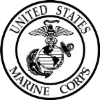Available 24/7
Professional Instruction
Free Training Materials






Course Details
The Upgrading Your Skills to MCSA: Windows Server 2016 - 20743 course is a 5-day course teaches students how to implement and configure new Windows Server 2016 features and functionality.
Students should have a high level of knowledge about previous Windows Server technologies and skills equivalent to the Microsoft Certified Solutions Associate (MCSA): Windows Server 2008 or Windows Server 2012 credential.
This course is not a product-upgrade course, detailing considerations for migrating and upgrading a specific environment to Windows Server 2016. Rather, this course provides updates to the student's existing Windows Server knowledge and skills, as they pertain to Windows Server 2016.
Topics covered in the course include:
- Installing and configuring Windows Server 2016.
- Describing storage in Windows Server 2016.
- Implementing directory services.
- Implementing Active Directory Federation Services (AD FS).
- Describing networking.
- Implementing Hyper-V.
- Configure advanced networking features.
- Implementing software-defined networking.
- Implementing remote access.
- Deploying and managing Windows and Hyper-V containers.
- Implementing failover clustering.
- Implementing failover clustering by using virtual machines.
Target Student:This course is designed for IT professionals who want to upgrade their technical skills from Windows Server 2008 or Windows Server 2012 to Windows Server 2016.
Students should possess the following Experience working before attending the course:
- Two or more years of experience with deploying and managing Windows Server 2012 or Windows Server 2008 environments; NS experience with day-to-day Windows Server 2012 or Windows Server 2008 system-administration management and maintenance tasks.
- Working knowledge of Windows networking technologies and implementation.?
- Working knowledge of Active Directory technologies and implementation.
- Working knowledge of Windows Server virtualization technologies and implementation.
- Knowledge equivalent to the MCSA credentials of Windows Server 2008 or Windows Server 2012.
Section 1: Installing and configuring Windows Server 2016
This section discusses how to install and perform post-installation configuration of Windows Server 2016 servers.
Topics :
• Introducing Windows Server 2016
• Installing Windows Server 2016
• Configuring Windows Server 2016
• Preparing for upgrades and migrations
• Migrating server roles and workloads
• Windows Server activation models
Lab :
Installing and configuring Nano Server
• Installing Nano Server
• Completing post-installation tasks on Nano Server
Section 2: Overview of storage in Windows Server 2016
This section discusses how to configure storage in Windows Server 2016.
Topics :
• Overview of storage in Windows Server 2016
• Configuring Internet SCSI (iSCSI) storage
• Configuring the Storage Spaces feature in Windows Server 2016
• Implementing the Data Deduplication feature
Lab :
Implementing and managing storage
• Implementing File Server Resource Manager (FSRM)
• Configuring iSCSI storage
Lab :
Configuring storage spaces
• Configuring redundant storage spaces
• Implementing the Storage Spaces Direct feature
Section 3: Implementing the Directory Services feature
This section discusses how to implement the Directory Services feature.
Topics :
• Deploying AD DS domain controllers
• Implementing service accounts
• What is Azure AD?
Lab :
Implementing and Managing AD DS
• Cloning an AD DS domain controller
• Implementing service accounts
Section 4: Implementing AD FS
This section discusses how to implement an AD FS deployment.
Topics :
• Overview of AD FS
• Deploying AD FS
• Implementing AD FS for a single organization
• Implementing Web Application Proxy
• Implementing Azure AD FS SSO with Microsoft Online Services
Lab :
Implementing AD FS
• Installing and configuring AD FS
• Configuring an internal application for AD FS
Lab :
Implementing Web Application Proxy
• Implementing Web Application Proxy
Section 5: Implementing network services
This section discusses how to configure advanced features for Dynamic Host Configuration Protocol (DHCP) and configure IP Address Management (IPAM).
Topics :
• Overview of networking enhancements
• Implementing the IP address management
• Managing IP address spaces with IPAM
Lab :
Implementing network services
• Configuring DNS policies
• Configuring DHCP failover
• Configuring IPAM
Section 6: Implementing Hyper-V
This section discusses how to install and configure Hyper-V virtual machines.
Topics :
• Configuring the Hyper-V role in Windows Server 2016
• Configuring Hyper-V storage
• Configuring Hyper-V networking
• Configuring Hyper-V virtual machines
Lab :
Implementing server virtualization with Hyper-V
• Installing the Hyper-V server role
• Configuring virtual networking
• Creating and configuring a VM
Section 7: Configuring advanced networking features
This section discusses how to implement an advanced networking infrastructure.
Topics :
• Overview of high-performance networking features
• Configuring advanced Hyper-V networking features
Lab :
Configuring advanced Hyper-V networking features
• Creating and using Microsoft Hyper-V virtual switches
• Configuring and using the advanced features of a virtual switch
Section 8: Implementing software defined networking
This section discusses how to implement software-defined networking.
Topics :
• Overview of software-defined networking
• Implementing network virtualization
• Implementing the Network Controller feature
Lab :
Implementing Network Controller
• Deploying Network Controller
• Configuring network services with Network Controller
• Managing and monitoring with Network Controller
Section 9: Implementing remote access
This section discusses how to configure connectivity for remote users by using the DirectAccess feature.
Topics :
• Remote access overview
• Implementing DirectAccess
• Implementing a virtual private network (VPN)
Lab :
Implementing DirectAccess
• Configuring DirectAccess by using the Getting Started Wizard
• Testing DirectAccess
Section 10: Deploying and managing Windows Server and Hyper-V containers
This section gives an overview of Windows Server 2016 containers. Additionally, it explains how to deploy, install, configure, and manage containers in Windows Server 2016.
Topics :
• Overview of Windows Server 2016 containers
• Deploying Windows Server and Hyper-V containers
• Installing, configuring, and managing containers
Lab :
Installing and configuring containers
• Installing and configuring Windows Server containers by using Windows PowerShell
• Installing and configuring Windows Server containers by using the Docker engine
Section 11: Implementing failover clustering
This section discusses how to implement failover clustering to provide high availability for network services and applications.
Topics :
• Overview of failover clustering
• Implementing a failover cluster
• Configuring highly-available applications and services on a failover cluster
• Maintaining a failover cluster
• Implementing a stretch cluster
Lab :
Implementing failover clustering
• Configuring iSCSI storage
• Configuring a failover cluster
• Deploying and configuring a highly-available file server
• Validating the deployment of a highly-available file server
• Configuring the Cluster-Aware Updating feature on the failover cluster
Section 12: Implementing failover clustering with Windows Server 2016 Hyper-V
This section discusses how to deploy and manage Hyper-V virtual machines in a failover cluster.
Topics :
• Overview of the integration of Hyper-V Server 2016 with failover clustering
• Implementing Hyper-V virtual machines on failover clusters
• Implementing Windows Server 2016 Hyper-V virtual machine migration
• Implementing the Hyper-V Replica feature
Lab :
Implementing failover clustering with Windows Server 2016 Hyper-V
• Configuring Hyper-V Replica
• Configuring a failover cluster for Hyper-V
• Configuring a highly available virtual machine
Please check the course description to find prerequisite information.
MOC On-Demand: 20743-Upgrading Your Skills to MCSA: Windows Server 2016
On-Demand Training Course
90/month licence
- 24/7 Access
- Hands-On Practice Exercises
- Free Repeats
- Professional Instruction
Testimonials
This was the class I needed.
The instructor Jeff took his time and made sure we understood each topic before moving to the next. He answered all of our questions, and I don't know about the rest of the students, but was very pleased with this experience.
I finally understand how to use Excel.
-Amanda T (Yale New Haven Hospital).
Great class!
We were able to cover a lot of information in one day without getting overwhelmed.
-Maria R (Microsoft).
Free Repeats
Learn At Your Pace
No Travel
Professional Instruction
Affordable Pricing
Group Discounts

